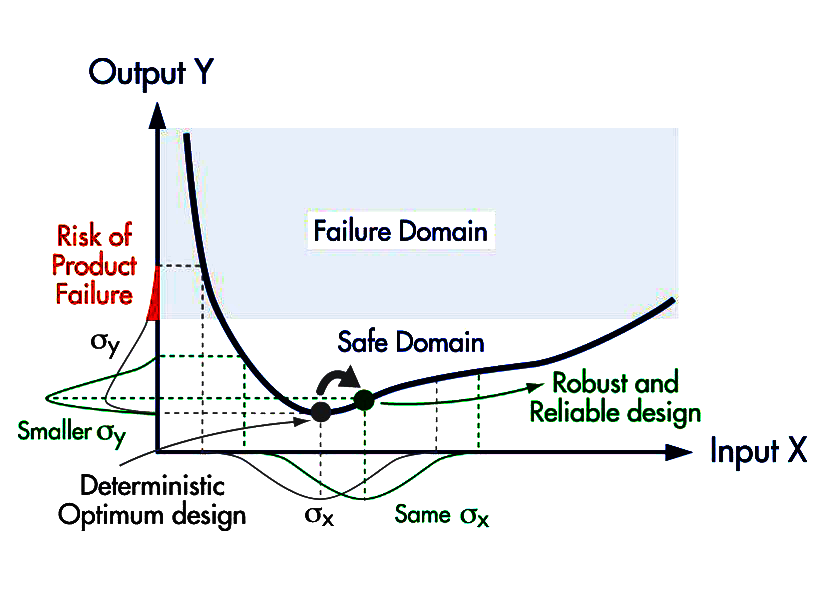Robustness & Reliability
ENGINEERING FOR THE REAL WORLD
Taking into account design parameter variability
Engineering simulation typically is a deterministic process. For a given set of design parameters, the corresponding result outputs are always the same. In the real world however, design parameters may vary as a result of manufacturing tolerances and geometric characteristics, for example. Due to this inevitable variability, simulation results usually aren't "fixed" values but are to be considered as distributed around a mean value.
Controlling parameter variability
Clearly not all variabilities are controllable or even worth the effort of controlling. The latter is the case when rare or extreme design conditions result in only a slight performance loss. 2 areas however are of major interest to engineering teams in this respect:
- the area of Robust Optimization, which aims to assess and control highly likely design conditions that yield a small performance loss,
- and the area of Reliability-based Optimization, which aims to assess and control rare or extreme design conditions that yield catastrophic consequences.

Robust optimization
Input variability is the source of unexpected and often unintended product behavior. Even at world-class manufacturers, it may occur that a design successfully passes deterministic simulation while some of manufactured items fail production quality control. To avoid this problem, Optimus’ robust optimization capabilities enables engineering teams to take into account the variability of design parameters, and subsequently applies robustness concepts and methods to ensure a robust design.
These concepts relate to Taguchi’s observation that it is often more costly to control the causes of manufacturing variation than making a process insensitive to these variations. Optimus robustness analysis therefore aims to provide an accurate estimation of simulation results sensitivity to design parameter variations, which are described in terms of random variables with a probabilistic distributions.

The automated Optimus robust design optimization process is suitable for complex barrel development. Optimus contains all necessary functions to automatically execute Taguchi methods from start to end, considerably saving development time and cost. Mr. Kazushige Sakamaki of Tyco Electronics Japan G.K., a TE Connectivity company
Automated execution of the Taguchi robust design optimization process of crimp connections enabled TE Connectivity to realize faster turnaround
Read the case study »Reliability-based optimization
A reliability analysis performed with Optimus assesses the probability that structures may fail for accidental combinations of low resistance and high loads. Reliability analysis is critical across a wide range of industries, aerospace being a typical example. This kind of analysis builds upon existing engineering workflows that have been captured and automated using Optimus, and adds statistical dispersion to the design variables. Thanks to Optimus’ fine-grained parallelization capabilities, the computational footprint of this resource-demanding process can be minimized.
Ultimately, Optimus' powerful multi-objective optimization algorithms even allow to optimize the engineering design to deliver the minimum safety level that is required.

Optimus is intensely used to engineer products for real-world environmental conditions
Discover how »©2024 Noesis Solutions • Use of this website is subject to our legal disclaimer
Cookie policy • Cookie Settings • Privacy Notice • Design & Development by Zenjoy